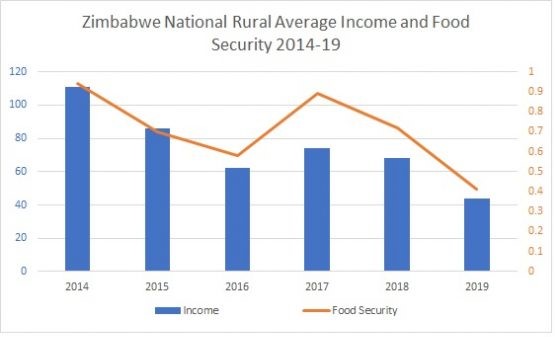Amalima Learning Site
Impact and Results
Amalima’s collaboration with its communities has resulted in improved food security, greater application of WASH practices, and overall enhanced resiliency. Amalima has been able to reach over 118,334 vulnerable households with agriculture, resilience, and nutrition interventions, in four rural districts of the Matabeleland region in southern Zimbabwe.

7.3%
Population-level reduction in stunting among children under 5
8.9%
Population-level decrease in households with moderate to severe hunger
30%
Population-level increase in the prevalence of exclusive breastfeeding for infants under 6 months
75,478
Farmers adopted improved technologies or management practices on 79,155 hectares of land
18,997
Households with improved access to water for agriculture and productive use
$1,480,372
USD Total Value of Savings through VS&L groups
Infographics
Baseline/End Line Results
In FY19, USAID led an external end line evaluation of Amalima to capture life of program results across indicators (Food security, WASH, Agriculture, Women and children’s health and nutrition, and poverty) and the impact the program had on “moving the needle” on development gaps identified at the onset of the program. Here is a comparison of the Baseline and Endline Indicators.
Amalima end line results indicate significant progress for all indicators measured, with the exception of the household food consumption score. End line results indicate improved nutrition and food security and practices as evidenced by an 7.5% reduction in stunting and an 8% reduction in underweight children under 5 as well as improved WASH practices, adoption of improved agricultural practices, and increased access to credit. The program impact is more clearly understood, however, within the overall context of significantly declining food security and income in Zimbabwe over the life of project, which the end line results do not account for. The economic crisis, together with several years of widespread crop loss due to drought, resulted in a 60% drop in household incomes and 56% reduction in household food security between 2014 and 2019. While incomes and food security fell throughout the country, nutrition indicators for the Amalima project area improved, demonstrating the resilience of households within the project area to maintain food security when faced with shocks and stresses.
| Year | Household Income | Household Food Security |
| 2014 | $111 | 94% |
| 2015 | $86 | 70% |
| 2016 | $62 | 58% |
| 2017 | $74 | 89% |
| 2018 | $68 | 72% |
| 2019 | $44 | 41% |

Outcome Surveys
Every year the Amalima project conducts an annual survey of beneficiaries whose objective is to estimate current key agriculture outcome level indicators to inform the review of the program’s agricultural indicator targets. The surveys cover all four Amalima districts of Tsholotsho, Gwanda, Mangwe, and Bulilima.
- Amalima FY 18 LQAS Report Round Four Preliminary Report
- Amalima FY18 Participant Based Survey Report
- Amalima FY19 Participant Based Survey Report
Final Indicator Results
Amalima has prepared documents highlighting the achieved program results:
- Per District (Tsholotsho, Bulilima, Mangwe, Gwanda)
- Amalima Life of Award Indicator Results
- Per Province (Matabeleland North and South)
Results Framework
A Results Framework graphically displays the results USAID and the Amalima Program intend to achieve over the implementation period. The “Theory of Change” that underlies the Amalima Program and USAID’s strategy is revealed through arrows in the diagram that identify causal linkages through which Sub-IRs and IRs help achieve the program’s objectives and goal.
Success Stories
Amalima has documented and produced written success stories over seven years of implementation, capturing achievements and beneficiaries’ stories. You can read more at CNFA’s Amalima page.





